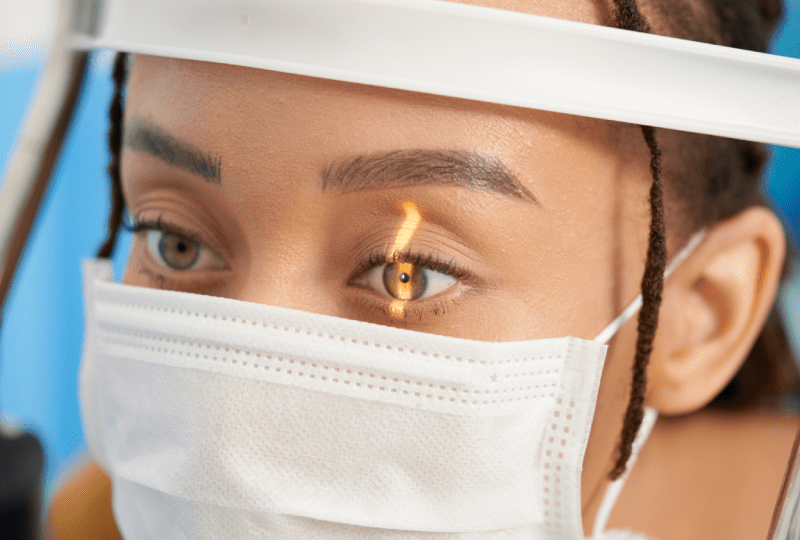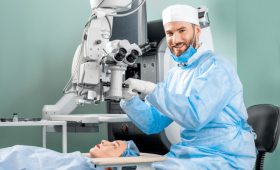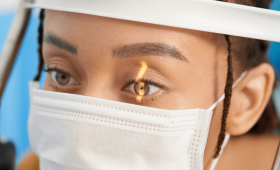How Do I Know If I Am a Suitable Candidate for LASIK Surgery?
The only way to determine if you are a suitable candidate for LASIK is to undergo a detailed and comprehensive eye examination. Your surgeon will first check whether your prescription has been stable for at least one year, then analyze your cornea thickness, shape (corneal topography), and the overall health of your eyes. Crucially, your corneal structure must be suitable for the operation. Additionally, your general health status (such as diabetes or autoimmune diseases) will be assessed to ensure no underlying issues could affect the healing process. Remember, this evaluation is much more than just measuring your refractive error; it determines how resilient your eye is to laser reshaping, and this decision can only be made by a specialist physician.
My Glasses Prescription is Too High/Low; Can I Still Have the Procedure?
Yes, there is a certain range of myopia, hyperopia, and astigmatism that LASIK can correct. Generally, up to -10 diopters of myopia, up to +5 diopters of hyperopia, and up to 6 diopters of astigmatism are considered suitable. However, these limits may vary from person to person depending on your corneal thickness and the laser technology used. If your prescription is outside these ranges or your cornea is thin, your surgeon may recommend an alternative procedure (such as an ICL intraocular lens). What is important is not the prescription itself, but rather how much healthy tissue needs to be removed from the cornea to correct that prescription.
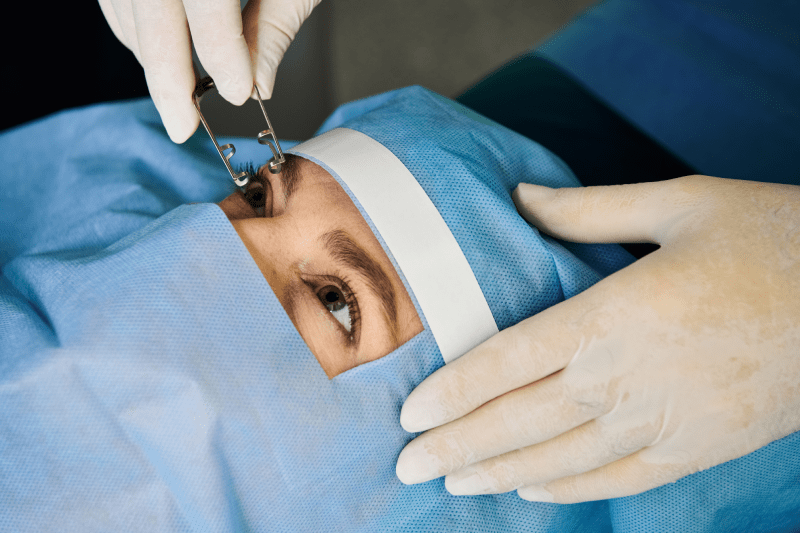
I Have Astigmatism or Hyperopia, Can LASIK Correct These?
Absolutely yes, LASIK is designed to correct these refractive errors. LASIK is used to treat myopia (nearsightedness) and hyperopia (farsightedness), as well as astigmatism (where the image focuses on multiple points). In the case of astigmatism, the laser precisely corrects the irregular curvature of the cornea, ensuring that light focuses onto a single point on the retina. Thanks to advanced laser technologies and personalized treatment plans (Wavefront), the successful correction of these three defects in a single operation is now a routine practice.
How Many Years Must My Eye Prescription Have Been Stable?
To achieve the best and most lasting results from LASIK, a fundamental requirement is that your eye prescription must have remained stable for at least one year prior to surgery. A minimum age of 18 is generally required, as the development of the eye structure is expected to be complete by this age. If your prescription has been continuously changing recently, your refractive error may return or the correction may be insufficient even after surgery. This stability criterion is strictly applied to ensure the treatment is successful and permanent in the long term.
Which Methods Can Be Applied If My Cornea Thickness is Insufficient?
If your corneal thickness is insufficient or its structure is deemed risky for LASIK, you do not need to worry, as alternatives to laser surgery are still available. Your surgeon may often recommend methods like PRK or No-Touch Laser, which are applied to the corneal surface and do not require the creation of a flap; these methods use less corneal tissue. If your prescription is very high and your cornea is very thin, ICL (Intraocular Collamer Lens) implantation can also be considered a permanent and safe alternative. Your surgeon will determine the most appropriate and safest solution for your eye structure after a detailed examination.
Are Existing Eye Diseases Like Keratoconus or Glaucoma an Obstacle?
Unfortunately, certain active eye diseases, such as keratoconus (a disease causing the thinning and conical shape of the cornea) or advanced, uncontrolled glaucoma (high intraocular pressure), constitute an absolute barrier to LASIK. Applying LASIK to an eye with keratoconus, in particular, carries the risk of dangerously worsening the condition. However, if diseases like glaucoma are in their early stages and fully under control with medication, some laser methods may still be possible. These decisions must be made only after a detailed examination, risk assessment, and definite exclusion of related eye diseases by an ophthalmic surgeon.
Which Age Range Is Most Suitable for LASIK?
LASIK is generally suitable for individuals aged 18 and over because prescription stability is expected after this age. There is no definitive upper age limit; patients with healthy eyes aged 60-65 can also undergo the procedure, provided their corneal structure is suitable and they do not have age-related issues like cataracts. The most ideal candidates are generally those in their 20s and 30s with stable prescriptions, as the natural age-related near vision problem (presbyopia) has not yet begun.
I Am Over 40, Can I Still Have LASIK Eye Surgery?
Of course, you can! Being over 40 is not a definitive obstacle to LASIK. However, at this age, Presbyopia (difficulty seeing nearby), the natural aging process of the eye, begins. While LASIK sharpens distance vision, it does not stop this aging process. Therefore, you must clearly discuss your expectations with your surgeon. Some patients may consider the Monovision option, where one eye is corrected for clear distance vision and the other is slightly corrected for better near vision. This can postpone or somewhat reduce the need for reading glasses.
Can I Have LASIK While Pregnant or Breastfeeding?
No, having LASIK surgery during pregnancy and breastfeeding periods is not recommended. Hormonal changes in the body during these times can cause temporary fluctuations in eye prescription and corneal thickness. This could lead to inaccurate pre-operative measurements and consequently, the expected result may not be achieved. For your safety and the best outcome, it is the most prudent approach to postpone the surgery until after pregnancy and once hormone levels have returned completely to normal after breastfeeding.
When Should I Stop Wearing Contact Lenses Before Examination or Surgery?
This is a vital step for the success of the surgery. Since contact lenses temporarily change the shape of the cornea, they must be stopped before the surgery and even before the preliminary examination to ensure accurate measurement. For soft lenses, generally 1 week is sufficient, but for rigid (RGP) or toric lenses, this period may extend up to 3 to 4 weeks. Your surgeon will give you an exact cessation period to ensure the effect of the lenses on your cornea has completely worn off and the cornea has returned to its natural shape.
Is LASIK Surgery Really Safe? Is There a Risk of Blindness?
LASIK is one of the most widely studied and frequently performed surgical procedures globally, and when performed with modern technologies, it has a very high safety profile. The risk of blindness due to the procedure is statistically extremely low and is generally associated with rare complications like controllable infections or flap issues. Surgeons minimize this risk by carefully screening high-risk candidates during the detailed pre-operative examination. As long as you are a suitable candidate, the primary risks you should be concerned about are manageable side effects like dry eyes or night glare.
What Happens If I Move My Eye During the Surgery?
This is one of the most common concerns. Modern laser systems are equipped with advanced technology called the Active Eye-Tracker System. This system tracks the micro-movements of your eye with millisecond precision. If your eye moves slightly, the laser beam instantly compensates for this movement. If you move too much or make an involuntary movement, the laser automatically pauses the treatment and resumes when your eye returns to the correct position. Thanks to this technology, involuntary eye movements do not adversely affect the surgical outcome.
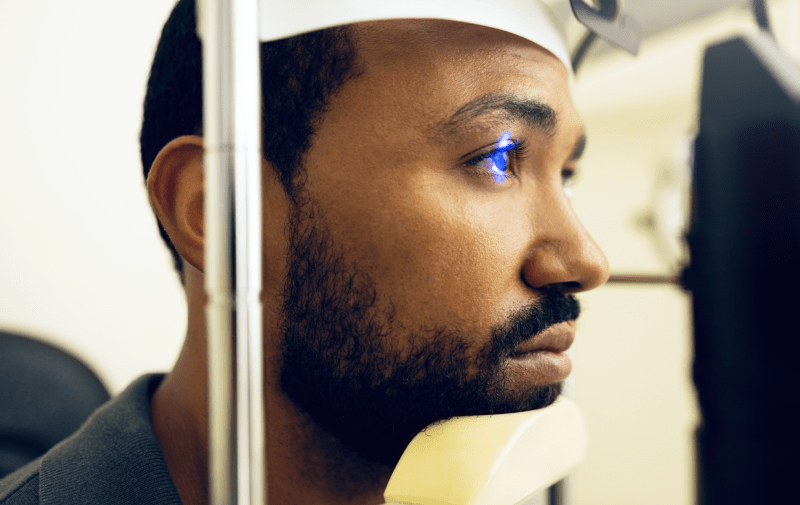
What Are the Possible Side Effects of LASIK (Dry Eyes, Night Glare, Halos)?
The most common side effects after LASIK are generally temporary. Dry eyes are the most frequent complaint and are typically managed with moisturizing drops for a few weeks or months. Night glare and seeing halos (circular images around light sources) are common, especially in the first few months as the eye heals. Thanks to new-generation laser technologies and personalized treatment profiles, the frequency and severity of these side effects have significantly decreased; the vast majority subside and disappear over time.
Will Night Vision Problems Be Permanent?
Night vision problems such as glare, halos, and starbursts after LASIK are generally temporary and are a natural part of the corneal healing process. These issues mostly disappear within the first 3 to 6 months as the corneal surface flattens and healing is complete. Rarely, in patients with high myopia or a naturally large pupil size before surgery, these effects may persist longer. However, your surgeon will perform the necessary measurements before the operation and apply a personalized treatment plan to minimize this risk.
How High Is the Risk of Infection After Surgery?
The risk of infection after surgery is very low, and is even considered lower than the risk of infection associated with contact lens use. To minimize the risk of infection, your surgeon will prescribe antibiotic eye drops that you must use immediately after the surgery. The most important things you need to do to eliminate the risk of infection are to diligently follow hygiene rules such as using your drops regularly, not rubbing your eyes, and protecting them from water, soap, or sweat during the first week.
What Risks Might Arise Due to Flap Creation?
The creation of the flap (corneal cap) in LASIK is the most critical step of the procedure. Risks associated with flap creation are very rare, and when created with modern devices (Femtosecond laser), these risks are almost negligible. Potential risks include flap dislocation, small particles accumulating under the flap, or irregular flap healing. However, wearing the protective goggles recommended by your doctor after surgery, avoiding rubbing your eyes, and refraining from severe trauma practically eliminate these risks.
What Is the Success Rate and Is 20/20 Vision Guaranteed?
The success rate of LASIK is very high; more than 95% of patients achieve a level of vision (20/40 or better) that allows them to perform daily activities without glasses. This rate can climb to 98% in patients with low to moderate myopia. However, 20/20 vision is not definitively guaranteed by any surgeon. This is because the visual outcome depends on personal variations in the eye’s healing rate and the tissue’s response to the laser treatment. The main goal is to largely free you from dependence on glasses or contact lenses, a goal that is overwhelmingly achieved.
Will I Feel Pain or Discomfort During or After the Surgery?
The surgery itself is painless because the eyes are fully numbed with special anesthetic drops before the procedure; you will only feel a sensation of light pressure or touch. There is absolutely no pain during the laser application. However, after the numbing effect wears off (generally within the first 4-6 hours), you may feel a stinging, burning, watering, and mild discomfort sensation, described as if sand is in the eye. This discomfort quickly subsides with the prescribed protective drops and rest, and usually disappears completely by the next day.
How Long Does the Entire Procedure Take (For Both Eyes)?
The LASIK procedure itself is incredibly fast. The total operation time, including all laser and surgical steps for both eyes, generally does not exceed 10 to 15 minutes. The actual treatment time where the laser vaporizes tissue on the cornea lasts only a few seconds per eye. You may need to spend a total of 2 to 4 hours in the clinic for preparation, resting, and final check-ups, but the surgical part is very brief.
Will a Sedative or Anesthesia Be Administered Before the Surgery?
LASIK surgery is performed under local anesthesia; meaning only special drops are used to numb your eyes, and general anesthesia is not necessary. However, to help you stay calmer and more relaxed during the laser treatment by reducing your excitement and tension, most surgeons may give you a light sedative pill (oral sedative) about 30 minutes before the procedure. This ensures your comfort throughout the process.
What Should I Do During the Surgery? (Like Keeping My Eye Open/Closed)
The most important thing requested of you during the surgery is to focus on the yellow or green fixation light. Do not worry about blinking or closing your eye; a special device (speculum) will keep your eyelids open. Your surgeon will tell you that you will feel a slight pressure when the flap is created, but that you must try to continue focusing on the light during this time. Remember, the laser already has an eye-tracking system, so minimal movements do not cause a problem.
Do I Need to Stay in the Hospital, or Can I Be Discharged the Same Day?
LASIK is an outpatient procedure that does not require hospital stay. After the surgery is complete, your eyes will rest for a short while, and a quick check will be performed by your surgeon. You are generally discharged the same day, a few hours after the procedure, accompanied by a companion. It is important to spend the first night resting and wearing the protective goggles.
LASIK, PRK, No-Touch, SMILE: Which Method Is Best for Me?
There is no such thing as “the best” laser method; there is only the method most suitable for your eye, prescription, and lifestyle. Each method has different advantages:
- LASIK: Offers rapid recovery and minimal discomfort.
- PRK/No-Touch: Suitable for patients with thin corneas or those who prefer to avoid flap risk, but the healing period is longer.
- SMILE: Flapless, minimally invasive laser method, but is only used to treat certain types of myopia and astigmatism. Your surgeon will determine the safest and best option for you based on your corneal topography and thickness measurements.

What Should I Pay Attention to When Choosing a Surgeon?
The choice of surgeon is the most crucial decision directly affecting the success of the operation.
- Experience and Expertise: Ask how long the surgeon has been performing laser surgery and their specialization in this field (including corneal surgery).
- Technology: Ensure that the laser devices used are up-to-date and have FDA/CE approved technology.
- Patient Satisfaction: Review feedback from previous patients and examine the surgeon’s success rates (especially for high prescriptions).
- Communication and Trust: Most importantly, ensure your surgeon patiently answers all your concerns and manages your expectations clearly and honestly.
When Will My Vision Start to Clear Up?
This varies depending on the technique applied:
- LASIK/SMILE: Your vision usually becomes largely clear a few hours after the surgery or when you wake up the next morning. Most patients can see clearly enough to drive the next day.
- PRK/No-Touch: Since no flap is created, the corneal surface needs to heal. Vision clearance may take 3 to 7 days, but blurriness and stinging are normal during this period. Full visual acuity may take several weeks to settle.
When Can I Return to Work or Daily Activities?
- The majority of patients who have LASIK/SMILE can return to work and light daily activities one day after the surgery (following the next-day check-up).
- For PRK/No-Touch methods, since the corneal surface needs to heal, a recovery leave or rest period of generally 4 to 7 days may be required. It is important to avoid intense screen exposure and excessive exertion during the first week.
When Can I Start Driving?
Driving is strictly forbidden for the first 24 hours after surgery. Most LASIK patients can start driving again after their next-day doctor’s check-up confirms they meet the legal vision standards. However, since you may still experience mild glare during night driving, it is safer to avoid driving at night until you have your doctor’s explicit permission.
When Is It Safe to Resume Sports?
Restrictions vary depending on the type of sport, and caution is necessary:
- Light exercises (Walking, light jogging): 1-2 days after surgery.
- Heavy exercises and fitness: Generally after 1 week, as they can increase intraocular pressure.
- Swimming (Pool or sea): Must be avoided for at least 2 to 4 weeks due to the risk of infection and chemicals.
- Contact sports (Boxing, basketball, etc.): 1-3 months strictly forbidden due to the risk of flap dislocation, and protective eyewear is mandatory afterward.
When Can I Start Applying Eye Makeup After the Surgery?
Eye makeup is strictly forbidden for the first few weeks due to the residue, the need to rub the eye, and the risk of infection. You can generally start reapplying eyeliner, eyeshadow, and mascara after 1 to 2 weeks. To minimize the risk of infection during the healing process, it is highly recommended to discard old makeup products (especially mascara) and purchase new ones.
How Long Does Dry Eye Last and How Is This Condition Managed?
Dry eye is the most common side effect of LASIK and is experienced by most patients. It usually peaks in severity in the first few weeks and subsides significantly within 3 to 6 months. Your surgeon will prescribe plenty of artificial tear drops to manage this condition; it is crucial to use these drops regularly, even if you do not feel the dryness. Rarely, chronic dry eye lasting longer than six months may occur; in this case, different treatment methods (such as punctal plugs) may be applied.
How Long and How Often Will I Need to Use Eye Drops?
The success of post-operative healing largely depends on the correct use of drops. Initially, antibiotic and anti-inflammatory drops (for 1-4 weeks) are prescribed to prevent infection and control inflammation. The longest-used drops are the artificial tears prescribed to alleviate dry eye. These drops may continue for several months, often 6-8 times a day initially, and then as needed. You must strictly follow your surgeon’s instructions.
When Will Full Recovery and Final Results Emerge?
Despite the rapid clearing of vision, the eye’s biological full recovery and the final settling of visual quality take longer. Visual quality usually stabilizes within 1 month for LASIK, but the complete reshaping of the cornea and the finalization of vision can take 3 to 6 months. It is completely normal to experience slight fluctuations in vision or slightly blurrier vision in the mornings during this period. Patience will be your greatest aid in this process.
Can a Touch-up (Enhancement) Be Done If My Prescription Rises Again in the Future?
Yes, in a small percentage of patients (especially those with high prescriptions), the refractive error may return slightly (regression). If the corneal tissue is sufficiently thick after the initial surgery and all other conditions are suitable, an Enhancement procedure can be performed. This is usually done 6 months to 1 year after the initial surgery, once vision has completely stabilized. The enhancement procedure typically takes less time, often by simply lifting the existing flap and applying the laser correction.
How Long Does the Effect of LASIK Last?
The reshaping effect of LASIK surgery on the cornea is permanent, and the degree of myopia, hyperopia, or astigmatism corrected by the surgery does not return. However, the surgery does not stop the aging of the eye. Over time, two natural processes may affect your vision: Presbyopia (age-related loss of near vision after 40) and Cataracts (loss of clarity in the eye lens in later years). Thus, LASIK is permanent, but the other parts of your eye will continue to age.
Will LASIK Prevent Me From Having Cataract or Other Eye Surgery in the Future?
No, absolutely not. This is one of the most frequently asked questions, and you can rest assured. LASIK intervenes on the outermost layer (cornea) of the eye, while cataract surgery deals with the internal lens. Having a history of LASIK does not prevent you from having surgery for cataracts or any other eye condition like retinal problems in the future. The only difference is that your surgeon may need to use additional measurements and special formulas to calculate the lens power during cataract surgery due to the altered corneal shape. Be sure to keep your pre-LASIK data.
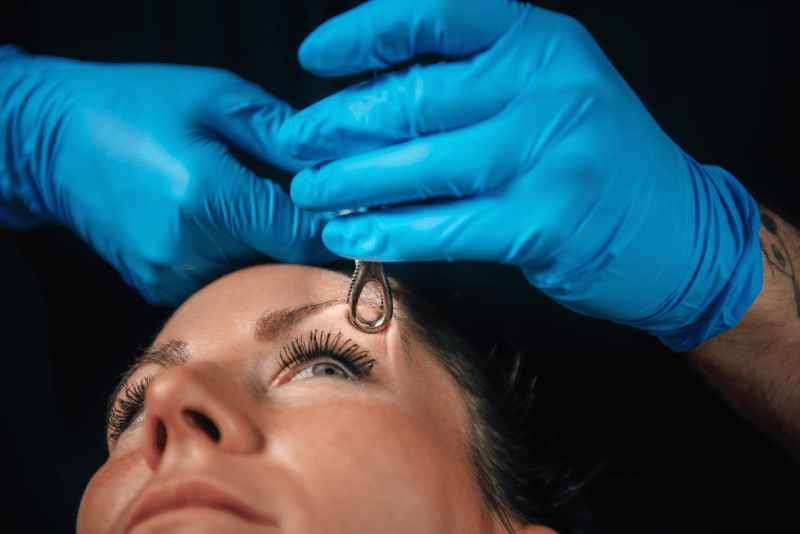
Will I Need to Wear Reading Glasses After Age 40?
Most likely, yes. Presbyopia (difficulty with near vision), which begins after age 40-45, is a natural aging process resulting from the loss of elasticity in the eye’s lens. LASIK corrects distance vision but cannot prevent this aging. Therefore, even after LASIK, you will eventually need reading glasses for close distances like reading a newspaper or looking at a small screen. This is not a failure of LASIK but a result of the eye’s natural physiology.
Why Are Some People Dissatisfied While Others Get Excellent Results?
Dissatisfaction often stems from unrealistic expectations, non-compliance with the recovery process, or unmanaged side effects. Patients who achieve excellent results are typically those who:
- Met the correct and ideal candidate criteria before surgery (sufficient cornea, stable prescription).
- Managed the side effects (like dry eyes) patiently and by following doctor’s instructions.
- Had realistic expectations about the surgical outcomes (such as accepting the need for reading glasses after age 40). The surgeon’s expertise, the technology used, and the patient’s individual healing rate are also critical factors influencing the results.
Why Should You Choose Turkey for LASIK Surgery?
Choosing Turkey for LASIK and other laser eye surgeries not only provides a cost advantage but also offers a health experience at global standards. Turkey has highly experienced surgeons trained in Europe and the US, due to the high volume of patients, and clinics utilize the most up-to-date laser technologies like Femto-LASIK and SMILE. The more affordable prices compared to Western countries make it possible to receive quality treatment while saving on costs. Furthermore, many health institutions offer comprehensive packages including fast appointments, accommodation, and transfers for international patients, transforming the treatment process into a comfortable and stress-free medical tourism experience.
What Is the Total Cost of LASIK Surgery and What Does This Price Include?
The cost of LASIK surgery varies significantly depending on the geographical location, clinic prestige, surgeon experience, and the laser technology used (such as Femto-LASIK, SMILE). Costs in Turkey tend to be more affordable than in Western countries. The total price typically includes: a comprehensive pre-examination, the surgical procedure itself (laser fee and anesthesia), the first post-operative check-ups (Day 1, Week 1), and essential post-operative medications (drops). Remember to clarify if there are any extra costs when inquiring about the price.
Will My Health Insurance or SGK Cover the Surgery Costs?
In general, because LASIK is considered an elective cosmetic procedure, most private health insurances and Turkey’s SGK (Social Security Institution) do not cover the costs. However, in certain exceptional cases of medical necessity, such as very high prescriptions (e.g., above -8 diopters) or where a person cannot wear contact lenses or glasses due to their profession (e.g., military), it is worthwhile to check the details of your insurance policy. Outside of these rare exceptions, the entire cost is usually the patient’s responsibility.
What Alternative Vision Correction Methods Exist Besides LASIK (Like PRK, ICL)?
LASIK is just one of the laser vision correction methods; if your corneal structure is unsuitable or your prescription is too high, other options are available:
- PRK/LASEK/No-Touch: These are flapless methods applied to the corneal surface, ideal for thinner corneas. Recovery is slower than LASIK.
- SMILE: A flapless, minimally invasive laser method, but it is only used to treat myopia and certain types of astigmatism.
- ICL (Intraocular Lens Implantation): This is a permanent surgical solution where a lens is placed inside the eye, suitable for patients with unsuitable corneal structure or prescriptions too high for laser limits. Your surgeon will select the most suitable alternative for your eye based on scientific data.
Why Cure Holiday?
Cure Holiday takes care of your treatment and logistics, such as hotel and airport transfers, during your stay in Türkiye. We also tailor packages to your accommodation needs and offer affordable packages that fully cover treatment. This is why many patients choose us. Like our other patients, you can contact us to receive healthy and successful eye care. You can also learn which treatment is right for you by telling us about your eye conditions. Remember, our doctors are available 24/7.
